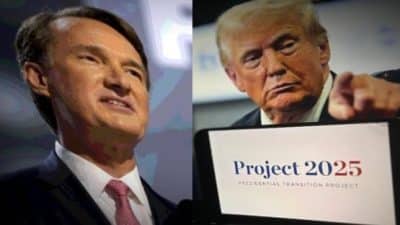
Donald Trump finally got his wish for a conversation with Xi Jinping. Or perhaps I should say that Xi granted Trump an audience. The Chinese leader has no doubt been energized by the adverse reaction inside as well as outside the U.S. to Trump’s tariffs.
The tariffs have clearly put Trump in a difficult bargaining position—just where Xi wants him. That suggests an evaluation of the conversation different from the media’s, which have optimistically said the U.S. and China are now sure to make progress on trade and can put the tariff war behind them.
I think otherwise.
To judge from the readouts provided by each side, Xi had a lot more to say than Trump. Xi stressed that a course correction in China-U.S. relations is “especially important,” using the metaphor of a ship with two helmsmen.
A “consensus” on trade issue has been reached, said Xi, but many steps remain to be taken:
“The U.S. should look at the progress made in a realistic way and withdraw the negative measures taken against China. The two sides should enhance exchanges in various fields such as diplomacy, economy and trade, military, and law enforcement, enhance consensus, reduce misunderstandings, and strengthen cooperation.”
By contrast, the U.S. readout merely noted that “the two leaders discussed numerous topics. . . Representatives of the United States and China will engage in discussions and negotiations on various issues of mutual interest.” Not exactly a menu for future action.
Xi seems to have extracted two commitments from Trump that diverge from actual U.S. policy.
First, according to the Chinese readout, Trump said he “welcomes Chinese students coming to the U.S. to study.” U.S. policy, most recently articulated by Secretary of State Marco Rubio, calls for the U.S. to “aggressively revoke” Chinese student visas if the student has a connection to the Chinese Communist Party or whose study is in a “critical field,” meaning advanced technology. The administration is clearly hostile to international students in general.
Second, the Chinese readout says “the U.S. will continue to support the One-China policy”—the one specific policy mentioned in the US readout. But while “one China” is longstanding official U.S. policy, in practice, the U.S. continues to provide substantial military and political support to Taiwan at a time when Taiwan’s new president frequently refers to the country’s “sovereignty.”
That is why Xi, according to the Chinese readout, “emphasized that the United States should prudently handle the Taiwan issue, and avoid letting an extremely small number of ‘Taiwan independence’ separatist elements drag China and the United States into a dangerous situation of conflict and confrontation.”
Neither readout mentions China’s restrictions on rare earth exports, a key issue in trade relations with the U.S. and many other countries. Yet Trump wrote on social media as though the issue was being resolved: “There should no longer be any questions respecting the complexity of Rare Earth products. We had a very good talk and we’ve straightened out any complexity, I think we’re in very good shape with China and the trade deal.”
You would think that the U.S. readout would have mentioned this “win” for Trump. The fact that it didn’t suggests that “straightened out” hardly reflects the actual situation. The Chinese response most likely was a matter of wait-and-see what Trump offers in return for resumption of rare earth exports.
Any notion that a breakthrough has occurred on trade, or that bilateral tensions have now been significantly reduced, is simply wrong. The best that can be said is that the two sides are talking—a second round is scheduled for June 9—rather than engaging in competitive tariff hikes and playing the blame game.
The main sources of current tension—which include Taiwan, tensions in the South China Sea, Chinese aid to Russia in the Ukraine war, fentanyl, people-to-people exchanges, and human rights as well as tariffs and trade—are no less serious now than they were before the Trump-Xi conversation.
Prior to his call to Xi, Trump wrote on Truth Social: “I like President XI of China, always have, and always will, But he is VERY TOUGH, AND EXTREMELY HARD TO MAKE A DEAL WITH!!!”
True enough; and unlike Trump, Xi is also consistent and determined in his messaging. He told Trump: “China is sincere and principled. The Chinese people always keep their promises and follow through on their actions.” That statement was both a commitment to hard bargaining and a dig at Trump’s erratic tariffs and his unclear trade policy.
If the U.S. is going to get anywhere in these talks with China, Trump will have to get his own house in order—a task that is more daunting by the day.
Mel Gurtov, syndicated by PeaceVoice, is Professor Emeritus of Political Science at Portland State University.









